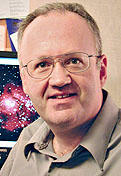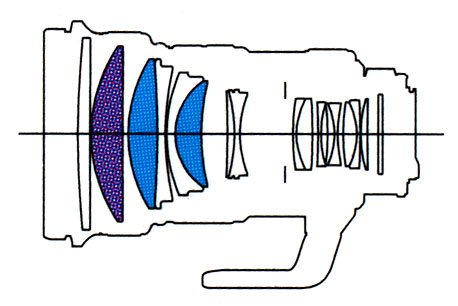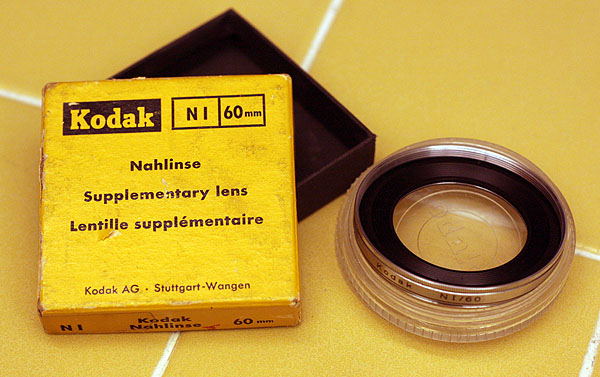|
||||

 Daily Notebook
Daily Notebook






|
|
2008 September 30 (Extra) |
What's coming next Somewhat surprisingly, the proposed "economic bailout" did not pass. A number of prominent economists came out against it, and the Democrats apparently did some clumsy politicking, so that they couldn't even get all of their own party to support it. I'm not sure I'm disappointed. Survival of the fittest will happen faster if badly run banks are simply allowed to fail. In the meantime, it looks like people with high credit scores (such as me) won't be affected, unless maybe the supply of student loans dries up, which is not all that likely. But banks are going to fail, probably right away (it's the end of the month). Here's how to protect yourself the risk from a bank failure:
|
|
|||
|
2008 September 30 |
Short notes Winding up the month, as the U.S. apparently changes economic systems... My parting shot about the "bailout" is this: The real cost is that the taxpayers and their elected representatives will have an anti-business bias for years to come, as the bitter taste lingers. We may get some much-needed regulation — or even too much regulation. Optical gadget of the day: The Spike-a, which is what you get when you crossbreed a Hartmann mask with a zebra. Definitely a creative and practical use of diffraction! Visual Studio 2010 and .NET 4.0 have been announced. Let's see... I've had 1.0, 1.1 (2003), 2.0 (2005), and 3.5 (2008). I still have some projects in the 2005 version and am settling into 2008. Now another? Well, the 2008 does does strike me as a bit of an awkward transitional form, with some gaps, like no DataGridView in WPF. I'll see you in October! |
|
|||
|
2008 September 29 |
Has "In God We Trust" been taken off our coinage? It is axiomatic that if an e-mail message tells you to forward it to your friends, it's false. People who actually have reliable information to distribute will publish it on web sites, not in chain letters. I thought for a moment I had found an exception to this, this morning. Someone sent me a message which he said he had checked on Snopes. The message said that the new dollar coins lack the traditional motto, "In God We Trust," and exhorted us to refuse to accept them. Sure enough, the designs for the front and back of the coins (on www.usmint.gov) lacked those words. Now, I am in favor of trusting God, but I am not in favor of forcing religious expressions on people who don't want to make them (since hypocrisy is itself a sin), so I can see why this might be a contentious point. But I didn't forward the e-mail. (I would be very unlikely to bulk-forward it no matter how important I thought it might be. E-mail is not a broadcast medium.) Instead, I dug a little deeper for information. The truth is, "In God We Trust" has not been removed from the new dollar coins. It's right there on the edge:
And if you really check Snopes (rather than taking someone else's word), you'll confirm this. Reportedly, there is a plan to move "In God We Trust" to the front or back of the coin in a year or two, and then I suppose the chain e-mailers will claim victory. |
|
|||
|
2008 September 28 |
Short notes My impression of the presidential candidates' debate? Both are anti-Bush. That was the most striking point. I found out why the economic bailout plan includes language making it exempt from court or administrative review. It's to prevent people from suing the Treasury for causing them economic harm — otherwise, the government might be besieged with lawsuits from malcontents. Still, there has to be a better way to achieve this. Bankrate has a handy list of useless insurance policies. (One of my correspondents points out that there is room for difference of opinion about some of these, so check the details of any particular situation carefully.) Energy-industry pundits are saying Georgia's gasoline shortage is merely the tip of an iceberg — our total national inventory of gasoline is low, which is why a pipeline problem caused shortages. This causes concern... I'm writing this (before noon on the 27th) as football fans are pouring into Athens to drain the town's pumps dry. We'll see what kind of circus that makes! Meanwhile, the creative folks at Make Magazine are pointing out that an economic downturn might spur a new Renaissance of creativity. (See also this.) Personally, I hope we don't have enough of a downturn to have much of an effect, but it's quite true that there's a trade-off between making things and buying things. People become more resourceful when it isn't so easy for them to buy things, and people begin to be appreciated for what they know, rather than for what they own. |
|
|||
|
2008 September 27 |
News from the photo industry Several intriguing new products have just been announced at photokina (the big German trade show; as with a few other German trade names, the name "photokina" is not written with a capital letter):
Note to astrophotographers! Kodak Ektar 100 film has strong response to hydrogen-alpha (unlike almost all other color negative films) and has minimal reciprocity failure. In effect, it is Ektachrome-like, except that it makes negatives and has the dynamic range of a negative film. I may try some (and make the prints digitally, by scanning the negatives). The seemingly low speed (100, not 400) is not a problem if there's not much reciprocity failure. I think, by the way, that part of what Kodak is doing is re-engineering their film manufacturing processes to be profitable with much smaller sales volume. Rather than preserve existing products unchanged, they modernize the products as they modernize the factories. |
|
|||
|
2008 September 26 |
An object in another galaxy
This unassuming-looking globular cluster, M54, is in the direction of the constellation Sagittarius and seems to be near the center of our galaxy. But it is actually much farther away than the galactic center — well away from the center on the side away from us. M54 is not part of our galaxy at all. It's part of the Sagittarius dwarf elliptical galaxy, a separate galaxy that orbits ours. Normally, globulars are scattered around the periphery of galaxies, above and below the main plane. But this one appears to be the core of its galaxy. This underscores the fact that there's a continuum from globular cluster, to galactic core, to dwarf elliptical galaxy (a big core without any periphery). If Omega Centauri (another famous globular) were by itself, it would be classified as a very compact galaxy. This is a stack of three 4-minute exposures with a Canon 20Da on an 8-inch telescope in my driveway. Dangers of gated communities Don't live in a "gated community" if you think you may ever need the services of an ambulance or the police. I presume firefighters would simply break down the gate, but ambulance crews aren't equipped to do so, and police may or may not be. I say this because of a pathetic drama I've just heard unfolding on the scanner radio. In America, it is legal to listen to police and fire calls (you can even listen to them online at www.scanathens.com) but not legal to redistribute information you obtain that way, so I won't give particulars. Incidentally, foreign readers may be surprised to find that American police departments generally don't object to the public listening to their radio calls. More good comes from it than harm. Specialist humor If you need a good laugh, look at either Home Inspection Nightmares (including the infamous lightbulb in the shower) or the BBC's latest article on medical slang (reference to original scholarly version here). Some of those, I had heard of before. I particularly like the idea that the number of tattoos times the number of missing teeth equals the number of days since the patient has had a bath. Gasoline shortage North Georgia is suffering a gasoline shortage caused partly by Hurricane Ike, which disrupted pipelines, and partly (I'm told) by hoarding and "panic buying." It looks as if three quarters of the gas stations in town are inoperative at the moment; on the way home from school, Cathy couldn't find gasoline, and Melody took Cathy's car to a gas station she knew about and filled the tank just before they shut down. This, even more than $4 gasoline, will, in my opinion, finally break the Atlanta 75-mile-commuting lifestyle. There is even talk of cancelling Saturday's Georgia-Alabama football game. If it goes ahead, I fear for the tens of thousands of drivers who are likely to be stranded after finding that they can't all buy gas in Athens on the same day. |
|
|||
|
2008 September 25 |
NGC 6888, the Crescent Nebula
By stacking nine 4-minute exposures taken through an 8-inch telescope at f/6.3 with a Canon 20Da, I managed to get a recognizable image of the faint nebula NGC 6888 from my driveway. But it doesn't hold a candle to the image Pete Albrecht got from an even more urban location using a narrow-band filter (click here and navigate to September 20, 2008). One day I want a narrow-band filter for my Canon. |
|
|||
|
2008 September 24 |
An hour of M27
This image of M27, the Dumbbell Nebula, is a stack of 15 (yes, 15) 4-minute exposures with a Canon 20Da and an 8-inch f/6.3 telescope in my driveway. Stars are visible down to at least 18th magnitude. That's not bad considering that the Palomar 200-inch telescope initially reached only 21st magnitude, using photographic materials of the 1950s. Short notes Online sky maps: Sky-map.org is amazing. (Thanks to Pete Albrecht for referring me to it.) The British now estimate that 2% of their £1 coins are counterfeit. Two percent? That's one in fifty. Amazing. And many are said to be so badly made that they're easy to spot. Maybe they need a modern-day Sir Isaac Newton to clean up the coinage! (And you thought Newton was just a physicist and mathematician.) I know I'm uploading these entries nearly a day before the date shown on them. These are busy times, and besides, the American economy might collapse before I upload the next one... if you believe the newspapers! |
|
|||
|
2008 September 23 |
Short notes Readers will be glad to know that on Sunday (the 21st) I finally completed the long-planned replacement of the prism in my Olympus OM-1. Unfortunately, there has also been some kind of mechanical failure in the exposure meter, and, like many elderly cameras, this one no longer has a working meter. In the future I'll have it repaired. One thing we can learn from the failure of Reagan-era radical deregulation of banking (which led to the overlending crisis) is that maximum freedom comes from the right amount of regulation, not the absence of regulation. With too little regulation, things don't function, and you don't have freedom in a non-functioning system. I believe that was the position of Aristotle, though I don't know exactly where he expressed it. I have applied the same principle to computer usage policies. The economic bailout proposal (as of Sept. 21) is getting serious opposition from experts (both conservative and liberal) because it contains some strange provisions, including a prohibition against any subsequent court review of how the money is used! Incidentally, it looks as if "investment banks" — the businesses that were going to make my Yale contemporaries rich — are extinct. Investment banking is still done, but as of today, it's done by commercial banks that are more regulated. Meanwhile, a while back I predicted a business opportunity for "live-in foreclosure residents". (Click here and scroll down.) Something similar to this is now being done, for long-vacant houses, though nobody has made the connection to foreclosure. |
|
|||
|
2008 September 22 |
Petri 7 wakes from 38-year nap 
My Petri 7 camera is back in service after a 38-year hiatus. It is loaded with Kodak 400TX film (the nearest equivalent to the Tri-X Pan that I used in the old days) and Melody and I are going to photograph scenery in Oconee County with it. I'll have pictures to show you in a few days. This is a rangefinder-focusing camera, which means there's a spot in the middle of the viewfinder where you see a double image, and you focus by making the two images coincide. The exposure meter is light-powered — it uses selenium cells around the lens to power a meter needle that you see in the viewfinder. Thus, no batteries are needed.
My father bought this camera secondhand around 1964, and judging from the pictures he took with it, its exposure meter was inaccurate from the start. In the summer of 1967 I taught myself how to use it, compensating for the errors in the meter (after one very underexposed roll). When I got an SLR for Christmas 1970, I put the Petri aside. I have dim recollections of using it briefly in 1976, or maybe getting it out and deciding not to use it. Apart from that, it was idle for nearly 38 years. Now it's been overhauled by Mick Moss, of Anaheim Camera Repair, who used to repair Petri 7's all day long for Petri. One detail he added was the ring around the frame counter, with the red dot that serves as the pointer to the current frame number. This ring was missing the whole time I used the camera, although once it was put back in place, I had a very dim memory that perhaps it had been there the first time I saw the camera. I'm sure most of this camera's career is behind it, but we'll see how well this veteran camera serves me in the 21st Century.
DSLR without the SLR? In Digital SLR Astrophotography I remarked that the digital SLR might be seen as an evolutionary transitional form, like a fish with legs, soon to be superseded by interchangeable-lens digital cameras whose viewfinders are electronic (with no SLR mirror). Now Panasonic has done it. Their Lumix G1 is the first of a new system called "micro four thirds" which allows the interchangeable lens to sit much closer to the sensor than would be possible if there were an SLR mirror. This implies, also, that lenses for virtually all other types of cameras can be adapted to fit this camera, since it has plenty of room for an adapter.
If you're an astrophotographer, don't rush out and buy one yet. The sensor is much smaller than Canon's, and the low-light performance may be inferior — at least on the first try. Or maybe not. We'll need to wait for test results. But I'm convinced that this general type of digital camera is the wave of the future. |
|
|||
|
2008 September 21 |
Gas mileage, measured in square millimeters We usually measure a car's fuel economy in miles per gallon. That is a distance divided by a volume. Equivalently, we could use gallons per mile. That is a volume divided by a distance. My car gets about 25 miles per gallon, or about 0.04 gallon per mile. Now, 0.04 gallon per mile = 0.151 liter per 1609 meters = 0.000151 cubic meter per 1609 meters. When you divide cubic meters by meters, you get square meters. So the fuel economy of my car is 0.000151/1609 = about 0.0000001 square meter = 0.1 square millimeter. To see why this makes sense, imagine a mile's worth of gasoline stretched out into a narrow cylindrical shape a mile long. Imagine your car driving along and, instead of drawing fuel from the gas tank, consuming this narrow cylider, which is just hanging there in the air, waiting to be consumed. Its cross-sectional area is 0.1 square mm, which means its diameter is 0.4 mm, about the diameter of a sewing needle. And that doesn't sound so bad, even if your car is a gas guzzler. Here we see that dimensional analysis — the realization that a volume divided by a distance is an area — leads to a real physical insight. Or at least it did for me, a few years ago. Melody, being smarter, had the same insight when she was a small child — she just imagined the car going along consuming a stream of gasoline. Short notes Our British friend Jacqueline Mitton has taken a remarkable picture of a rare upside-down rainbow. (Another link here.) Contrary to rumors, this is not the doing of the Labour Party, nor the Obama campaign. I'll stop talking about the economy soon, but how often do you see a Fed news release with a 3 a.m. dateline? (That's no typo. It really was released in the middle of the night.) One last economic exhortation, before I stop: Don't do anything foolish. People are drawing all their money out of the bank — or, worse, "drawing out all the equity" by maxing out their home equity loans and just hanging onto the money — with the notion that this will protect them from something. What or how, I have no idea. They're also hoarding gasoline. And I hear lots of confused talk from people who don't know the difference between inflation and recession. Beware of scams — when people are this confused, con men will have a field day. |
|
|||
|
2008 September 20 |
The Palin hacking incident [Updated.] By now you've heard that someone broke into Governor Palin's personal Yahoo e-mail account. The media are saying somebody "hacked in," but in fact it was not any kind of technical exploitation. Somebody just contacted Yahoo, claimed to be the Governor, claimed to have lost the password, and Yahoo believed them. I gather this was done by an automated procedure where you answer a "security question" that isn't very difficult. So I blame Yahoo for lax security. If someone comes claiming to have lost a password, and wants the new password e-mailed to an address you've never seen before, red flags should go up. Of course, most of all I blame the impersonator. This wasn't a "prank" any more than walking into the governor's office and browsing through the desk drawers would be a "prank." But there are also some troubling questions about Gov. Palin herself. All I know is what I read in the papers, but is there any truth to the rumors that she used the account to try to get around open-records laws? If so, that is disturbing on many levels. It is probably illegal for a state employee to try to circumvent open-records laws in that way, and it probably won't work — I don't know the details of Alaska's laws, but I'd expect them to apply to government correspondence no matter where it is stored. (Note: Later reports are that no sensitive government information was found in the e-mail; it may have been a genuinely personal account that did not need much security.) You've also heard that the "hacking" was done through a packet-forwarding service (reportedly Gabriel Ramuglia's VTunnel right here in Athens, Georgia). Do I blame them? No, not on the face of it; so long as they don't actively encourage or conceal crime, packet forwarding is legitimate. A packet forwarder just passes data packets along from one computer to another so that the location of the original computer can't be tracked. It's something you might use if you want to contact a web site that might be tracking you maliciously. (Contrary to the AP article, packet forwarding has nothing to do with e-mail addresses; what it conceals is the IP address giving the location of a computer on the network.) Of course, if I were running a packet forwarder, I would keep records so that if people started using it for criminal purposes, they could be caught. Just like a human being who delivers a message anonymously for another, the packet forwarder needs to keep open the possibility that if it turns out that you're up to no good, we do know who you are. |
|
|||
|
2008 September 19 (Extra) |
The economy, again Quote for the day, from Thomas Palley:
I'm not sure which side is actually liberal and which side is conservative, but I certainly agree that the main priority should be on containing the damage and fixing the system. |
|
|||
|
2008 September 19 |
Short notes While walking around the campus and remembering my first day 35 years ago, I observed that nowadays my camera autofocuses and my eyes don't; it used to be the other way around. Cathy encountered some students who were composing a letter to our mayor, Heidi Davison, but got it into their heads that her name was Heidi Klum. The dust hasn't settled, but I think we've just seen the biggest change in the nature and function of the U.S. government since 9/11. Here is a good technical explanation of the economic upheavals, up to about 24 hours ago. There's more news every hour. The danger or risk to ordinary Americans who don't have ARMs? Practically none, as far as I can see. But the era of radical deregulation is over. TV for busy people: Below is the most cluttered TV screen layout I've ever seen. That's five TV screens and about six fields of moving text. As usual, the mind boggles.
|
|
|||
|
2008 September 18 (Extra) |
The South shall rise again...? [Updated.] Has anybody else noticed that the current chaos in the financial industry may be leading to a shift of power from the North to the South? Wachovia (Charlotte, N.C.) is apparently buying Morgan Stanley (J. P. Morgan's New York City enterprise). Bank of America bought Countrywide and is buying Merrill Lynch and anything else it can get its hands on. Recall that Bank of America is really mostly Nationsbank, which is descended from a North Carolina bank plus the C&S Bank of Georgia, which was built up by my distant relative Mills B. Lane, Jr. (1912-1989). When I was at Yale (1978-82), the place was aswarm with bright young people who wanted to become investment bankers and get rich. (I was a little skeptical because they all seemed to be wanting to do financial tricks rather than actually increase the nation's production of goods and services.) Apparently, their generation has been running the economy for a while... and have run it into the ground. And they're concentrated in the Northeast. |
|
|||
|
2008 September 18 |
35 years [Corrected.] September 18, 1973, was the day I flew into Georgia concluding a trip around the world. The next day, the 19th, was my first day of classes at the University of Georgia. It was part of an eventful week. I flew in from Rome, Italy, with the other U.S. delegates returning from the International Science School for High School Students in Australia. They had sent us completely around the world, westward, and on the 14th I had been given a surprise birthday party at the U.S. ambassador's residence in New Delhi. On the night of the 18th, I spent the night for the first time in our new house in Athens, Georgia, which my mother and sister had moved into (from Valdosta) during my long absence. They even unpacked and reconstructed my room almost as if nothing had moved. The morning of the 19th was sunny and crisp. My classes were Greek 201 with the legendary James W. Alexander, Political Science 105H with Keith Billingsley (whom I later enjoyed getting to know as a colleague), and Honors Mathematics for Non-Science Majors with David Phillips (if I remember the name right). I still have the textbooks and can remember the names of some of the students in the classes. Every quarter of every academic year was a good one, and I graduated in 1977. Also, I am living disproof of the legend that if you walk under the Arch as a freshman, you will never graduate and/or never have children. |
|
|||
|
2008 September 17 |
Short notes Who would have thought...? There's a whole web site devoted to the Petri 7s, the first camera that I used regularly. In the summer of 1967 I taught myself how to use my father's cameras, mainly this one. The Petri had an exposure meter problem and got put aside in 1970; it was repaired in (would you believe) 2007 but I haven't run any film through it yet. Soon! Good idea of the day: From Jim Mischel. People who defy mandatory evacuation orders should have to pay for the cost of rescuing them. No more staying behind and then dialing 911 and demanding help when the hurricane hits. Bad idea of the day: Texting while driving a train. What will it take to convince people that they cannot play with electronic toys when their minds and eyes need to be on something else? It's bad enough dealing with people ambling through parking lots and not looking at the moving cars. Cathy saw a college girl get stuck in an automatic door while texting — and when the door closed, she screamed but wouldn't take her hands off the cell phone to rescue herself! |
|
|||
|
2008 September 16 |
More photo notes Olympus nostalgia: The fine folks at Olympus have begun to realize that they used to have a loyal following of serious SLR photographers (many of them scientifically or technically inclined) who are not particularly attracted to the current Olympus product line (of fast, compact, easy-to-use but not maximally versatile DSLRs). So for us old-timers they've created the Olympus wallpaper library consisting of images you can download and use as screen backgrounds, and even some Olympus screensavers. I have the OM-1 screensaver on my laptop. It works fine, but the installation procedure was a bit mysterious because it apparently requires a Japanese font that isn't on my machine. Some of the installation prompts said "?????????????" (literally) and I just guessed that the highlighted button was the right one to press. The OM-1 made history but has no direct legacy today. Right after its heyday, and led by Canon, film SLRs began to incorporate motor drives and autofocus, and that made their bodies large and bulbous instead of small and neat like the OM-1. An amazing lens: The 200-mm f/2 Canon lens that I mentioned yesterday has an astonishing MTF curve indicating that it is remarkably sharp and free of aberrations. I can't find a diagram of it on line but saw one at the show... This lens has 17 elements in 12 groups. Gone are the days when a good telephoto lens (such as the Olympus 100/2.8 E.Zuiko) had five elements! Of course, today's "good" lenses are two or three times as sharp as yesteryear's best. I seem to recall that this one's design is a distant descendant of the Zeiss Sonnar family, with each original element replaced by a set of elements. Update: Here's the diagram; I found it in the Canon Spring 2008 EOS System catalog. Count the elements, if you can. This has to be the most elaborate fixed-focal-length lens design I've ever seen.
As if that weren't enough, it also incorporates image stabilization to overcome camera shake. You can handhold it at 1/5 second! The limit with an ordinary 200-mm lens is 1/250 second. I may get to try one for astrophotography. There's only one reason I won't buy one: the price. It's a $5,000 lens, and $5,000 can buy a lot of other astrophotographic instruments that would ultimately accomplish more. I'd settle for the Canon 200-mm f/2.8, which picks up half as much light and costs 1/10 as much. The 200/2 is made for sports and news photography. The fact that it's more powerful than many large telescopes is a side benefit. |
|
|||
|
2009 September 15 |
What we saw at the camera show 


On Sunday, Melody and I went to the Georgia Professional Photographers Association trade show and saw a lot of interesting things — especially some new Canon products that Fred Metzler invited us to come and see. They are:
Click on the pictures above for more information. Since the GPPA meeting was held in Athens (Georgia) this year, some wit rendered GPPA in Greek letters as Γ Π Π Α on some of the signs. Clever, but Γ Π Φ Α would have been better, since "photographer" starts with Phi, not Pi. |
|
|||
|
2008 September 14 |
A visit to the cameras' graveyard
Today (Sept. 13) Melody and I went to the moving sale ("sidewalk sale") at KEH Camera, which is normally a mail-order-only operation, the largest used-camera dealer in America. People were gathered outside an industrial building in northwest Atlanta, looking at tables and going through boxes of merchandise on the ground. Dozens of SLR lenses were priced at 50 cents (inoperative) or $1 (apparently functional, no warranty). Almost all the cheap lenses were zooms, which are expensive to repair. The fully functional ones were for obsolete lens mounts, mainly Minolta MD, and all of the cheap lenses were off-brands (Sears, Focal, etc.). I didn't buy even one lens. I did get a number of curiosities for my display cabinet — an old roll of 8-mm Kodachrome, a curious Kodak close-up attachment (shown above), a small Speed-Ez-El. Then there were useful things: a new negative carrier for my Beseler enlarger (with a series of price tags showing the markdowns all the way from $95 to $1) and a Beseler lensboard. But the best bargains were found by Melody. She got three Bogen hexagons (tripod quick-release devices) for $2. They are normally something like $20 each. A trip to a photographic "graveyard" or junk sale is a profound reminder of one's own mortality. Photography itself is concerned with preserving memories, so it's easy to become nostalgic about the equipment, too, especially if comprises items that we wanted intensely thirty years ago, or at least admired for their high quality. There is something pathetic about finding a Zeiss Contaflex or an Olympus OM-2 dented and covered in dust — and today I handled both of these (and could have bought them for a couple of dollars each). At the same time, cameras are a means to an end — pictures — and not an end in themselves, so when they become obsolete, they're practically worthless. This is an economic phenomenon about which Charles Babbage once wrote a book. The value of a machine plummets when a better machine for the same job is invented. Computers suffer from it even more than cameras. Mall upon hard times? Fifteen years ago, Gwinnett Place Mall was one of our regular haunts. Today we revisited it after a lapse of two or three years. Impression: Malls (this and other ones) are looking more prosperous than they were around 2003, which seems to have been their low point. They're prospering by moving toward more practical merchandise. No longer do malls rely on teenaged girls with infinite time and money to spend on clothes. Instead, we're seeing a greater variety of useful goods and services, including computer repair (very welcome) and even cell phone repair (even better). Most dubious product we saw all day: Heart-shaped paper clips. Imagine the sexual harassment charges that would result if these started circulating in an office. |
|
|||
|
2008 September 13 |
Short notes, mostly economic Despite being busy, I'm back... We'll see whether I really have to skip any days this weekend. For now, the Daily Notebook continues to be daily. I've figured out why Zillow no longer has an opinion about the value of my house or those near it. (No, I'm not selling my house, but the real estate market is a handy way to take the pulse of the local economy. At least, it was, back when Zillow was fully functional here.) Earlier, I suspected it was because of too much variation in the comparable sales statistics. Now I can say more precisely that there are too many cheap foreclosure sales in the mix. If you cruise around Athens, Georgia, on Zillow, you'll find some houses with tax assessments around $100k that have recently sold for $20k or so. At least I presume these are foreclosures. Maybe they met with disaster in some other way. Anyhow, they throw a monkey wrench into Zillow's method of computing house values. All the experts, or self-professed experts, are now saying that my recent predictions of increasing inflation are off base and that we will have low interest rates for years to come. New horizons in rudeness: Even worse than the wedding-invitation-with-a-price is the new practice of inviting your friends to an expensive party and then insisting that they pay several hundred dollars for it. Who thinks up these things? And why did CNN interview a psychotherapist? This sounds more like a matter for a lawyer. Is TV bad for children? Obviously, taken to excess, it's mind-numbing, and much of what is on TV is morally bankrupt. TV is no substitute for parents. But a recent study reminds us of the benefits of TV in exposing children to intellectual stimulation (and, I add, the standard English language). If you're a toddler, watching TV is worse than interacting with your parents but better than staring at blank walls, which really would be the alternative for many children much of the time. |
|
|||
|
2008 September 12 |
A surfeit of events The world is honoring my 51st birthday (September 14th) by scheduling as many events as possible for this weekend. I have 2 photo industry events to attend, as well as family and church activities and my own work. I'll see you when things settle down! (None of these events is specifically for my birthday, of course. The world is just busy!) |
|
|||
|
2008 September 11 |
Short notes Almost a year ago I took AT&T to task for an obviously misconceived acceptable-use policy that tried to forbid AT&T customers from disparaging AT&T. Today they replaced it with a much more reasonable one. Here's how to find the cheapest gasoline in your town. |
|
|||
|
2008 September 10 |
My most-quoted publication ever? Click here to read a short note that I wrote at a colleague's request, to encapsulate something I had said in conversation. With my kind of luck, this will become my most famous publication. Its first two sentences have already become someone's e-mail tag line. |
|
|||
|
2008 September 9 |
Work crunch The traditional mid-September work crunch is upon us. The Daily Notebook will continue when I have time to write something. |
|
|||
|
2008 September 8 |
Thank you, Caplugs!
Is all economic news bad? Have you noticed that no matter what happens to the economy, the news media report it as a misfortune? Housing prices go down, and all of a sudden people have lost their personal wealth. Housing prices go up, and housing is unaffordable. The dollar goes down, and our nation is becoming worthless. The dollar goes up, and some kind of investors are in dire straits (I'm foggy as to exactly who). No matter what happens, it's bad for the people who were betting it wasn't going to happen. |
|
|||
|
2008 September 7 |
Static-sensitive USB ports We have two computers with USB ports on the front panel. Both of them have the following quirk: If you walk up to the computer and plug in a USB device, the static electricity makes the computer crash and reboot. If you touch the front panel and then the shell of the USB jack with your finger first, you're OK. This is in a home office area that is not very static-prone. We certainly don't see sparks or hear pops as we go about our business. We've even used some anti-static carpet spray recently. For what it's worth, both computers have Asus motherboards and the front-panel USB port is wired to the motherboard. On one of them, I ran an additional ground wire from the shell of the USB jack to the computer case, and it reduced but did not eliminate the problem. Does anybody out there know more about this than I do? Any cures available? Economic notes Why the culture of thrift is anti-inflationary: Very simply, people are not borrowing money to spend, which means that (as Milton Friedman would say) there's less money chasing the same amount of goods and services. The effective money supply is smaller.
Non-economists often don't realize that lending creates money.
Suppose I find a $100 bill on the street and deposit it in the bank.
Clearly, I have $100. And suppose banks are allowed to lend out half of
what they have on deposit. Then the bank can lend you $50. At that
point you have $50 in your pocket but I still have $100 in the bank.
Somehow that $100 bill has turned into $150. And so on... You could
deposit the $50 and someone else could borrow $25, etc. And you thought the government controlled the money supply. They do it only indirectly, by setting interest rates and regulating the banking system. Sometimes, even if you offer a low interest rate, people don't borrow much, and that's what's happening now. I think I've figured out why Zillow no longer has an opinion about what my house is worth: there's too much variation in the value (per square foot, etc.) of the comparable houses. There are houses on the market around here that ought to be comparable to mine, but the prices differ widely, and of course the price doesn't really mean anything until a house actually sells. Questioning the American Dream The post-WWII "American Dream" is for everybody (or at least every married couple) to own their own home. Public policy has been strongly slanted toward favoring this, through agencies such as FNMA and FDMC as well as general economic policy. After 60 years, the post-WWII expansion is ending, and we've been suffering through a "housing bubble." And at least one economist, Robert Shiller of Yale, is pointing out that putting all your wealth into just one thing — a single house — may not be wise. It's certainly contrary to two well-known principles of investing: (1) investments should be diversified; (2) you shouldn't invest borrowed money. If you can be sure house prices are going up, then buying one on margin — that is, investing borrowed money — can be very profitable. You borrow $10,000, buy for $10,000, sell for $15,000, pay off the loan, and pocket the difference. That was the early-1950s road to financial security. Everyone on that road got help from the inflation of the 1960s and 1970s, which increased the dollar value (not the true value) of the house. But if you invest borrowed money and the price fails to go up, you have a problem. All investors know this about all other types of investments. Somehow, houses, as "the American dream," are supposed to be exempt. There's another angle to the American dream: home ownership keeps people tied down. This is good for employers. If your workers have mortgages, they can't just pick up and go off to another town when they get another job offer. You have them captive, or as employers like to put it, they're "stable." And that is what is causing misery in the de-industrializing Northeast. When Kodak downsizes, house prices in Rochester plummet, and all those workers' American dreams turn into nightmares. Schiller has an idea I'm not sure I completely understand, the "continuous workout mortgage," where, in essence, you are buying a steadily increasing percentage of your house from the bank, rather than a steadily increasing dollar value; when the value of the house changes, the bank takes the risk along with you but also shares in the profit. It looks to me as if this would make home buying safer and easier but less valuable as an investment. |
|
|||
|
2008 September 6 |
Farewell, Eos; hail, Skinfaxi Last night (Sept. 4), we came home to find that our file server, Eos, was inoperative. Melody and Cathy bought Eos at a super-early-morning Wal-Mart sale right after Thanksgiving 2002 — one of those "line up at 6 a.m. and we'll sell you a computer for $300" deals. Because of the hour at which it was bought, they named it Rosy-Fingered Dawn, or Rhododaktylos Eos as Homer put it in Greek. The failure is on the motherboard and is not the RAM. Accordingly, Eos has been scrapped, although I may try to get part of it working. We were about to go to Wal-Mart and buy a Dell refurb, or something, as an emergency replacement, but Cathy generously gave us Skinfaxi, the computer she had bought right after high school and was no longer using. Its name means "shining horse" and comes from Norse mythology. I moved Eos's operating system license (XP Pro; it validated just fine) and some hardware components into Skinfaxi, and it is serving us well. Eos's hard disk, which is undamaged, is now Skinfaxi's secondary disk. Thanks, Cathy! Too much ventilation While working on Skinfaxi, I found that the inside of its case had gotten very dusty despite being in an ordinary, clean, household environment. The culprit was too much ventilation. Skinfaxi was built in a "gamer" case with three case fans and lots of ventilation. And of course a lot of dust was sucked in. I deactivated some fans and covered up some vents, and Skinfaxi is not only cleaner, but also quieter. And the CPU is running at 93 F versus the original 80 F — not a problem. Electrical engineers know (even if "gamers" don't) that with ventilation, you only need enough, not too much. This is a computer, not a vacuum cleaner! Uploaded from Skinfaxi, 9:35 p.m. September 5. |
|
|||
|
2008 September 5 |
More astrophotos In between stints of UFO-gazing on Sept. 3, I also did some traditional astrophotography with my 8-inch telescope in my driveway. Here's Jupiter, the best 1500 out of 2400 or so video frames, stacked and processed with RegiStax:
Then, using my steel-plate gadget from last month, I was able to reach the far southern sky with a piggybacked Canon EOS 20Da, 300/4 lens, and ×1.4 teleconverter. Here's Ptolemy's Cluster (M7), with a small globular cluster (reddish) to the upper right, and star clouds in the background: 
And here's M16 (the Eagle Nebula or Pillars of Creation). This is not a very good picture; much more exposure would have helped.
Each of these is a stack of just two 4-minute exposures at f/5.6, corrected with dark frames and flat fields. We got busy observing the UFO. Two observations about the economy (1) Our new culture of thrift is strongly anti-inflationary. Even the people who are earning more are spending less. This makes it possible for interest rates to stay low without fueling inflation. So although I expect the inflation rate to be higher than the target (2.5%) over the next few years, I'm expecting interest rates to stay moderate. Putting this a different way: The demand for loans has dropped so much that loans are going to remain cheap, with interest rates not much higher than the rate of inflation. (2) It has been observed that mortgage interest rates appear to be artificially high right now. Lenders lost so much money on bad mortgages that now they have to price their products high in order to stay in business. Expect this situation to change. |
|
|||
|
2008 September 4 |
The Athens UFO While doing some astronomy in the driveway last night (Sept. 3), I saw the Athens UFO, which people have been seeing intermittently since July 4, and so did Melody and Cathy. Either there were three of them or it came over three times. It was a very bright (-8 magnitude), very compact red light; through binoculars I saw a hint of someting above the light momentarily reflecting it, and at times the UFO dropped small luminous objects that quickly ceased to glow. On one occasion the red light itself apparently fell to the ground.
This is a 30-second time exposure as the UFO moved gradually to the left against the stars of Ursa Minor (Polaris at right, Kochab at left). It dropped a small white object near the end of the exposure. I think these are probably small, expendable, unmanned balloons launched by a prankster. I'm a bit puzzled by the bright light, though. It resembles a hue seen in fireworks, but it burns with the steadiness of an electric light and must be extremely bright. The light is not directional — the UFO moved in different directions but the light did not dim very much as it moved around. We didn't think of determining altitude by parallax. As I walked around, I didn't notice any parallax, so the object was probably at least a couple of thousand feet off the ground. Brook Monroe writes to say it's a safety flare (like the kind used on the road) tied to a black plastic bag inflated with helium. That sounds right. The brightness and color are consistent with this, as the absence of a visible balloon (because it's black). Bowman Austin calls my attention to sky lanterns, which are traditional Asian candle-in-a-paper-balloon gadgets, but these are not as bright, nor red-colored, nor is the balloon invisible. |
|
|||
|
2008 September 3 |
Who ever would have guessed? For years I've been saying that the credit card industry was neither ethical nor prudent. Now, guess what? Reuters says: Weak economy set to hit credit card companies hard U.S. credit card delinquencies are rising and the credit card issuers could be in for a lot of agony. Expectations that cash-strapped consumers and businesses will default on their credit card balances in greater numbers are forcing lenders to reduce consumer credit lines, cut back on signing up new customers and raise fees. But even these, in some cases drastic moves, are likely to be too late to save the credit card issuers from substantial credit losses... |
|
|||
|
2008 September 2 |
$20 buys a lot of calculator these days A couple of years ago I standardized on the Casio FX-115 MS Plus scientific calculator, bought three of them (one for each of the desks I work at), and even wrote a reference card for it. Well, the other day I needed another one, but now it's the Casio FX-115 ES and has even more functions. It will even do numerical integration!
(The argument of cos(X) here is in degrees. Recall that cos(6.28°+2°) is very close to 1, so the integral is very close to 6.28.) Actually, the older FX-115 MS will also do numerical integration, but without the handy notation for it. What impresses me about the new one is that it uses enough standard mathematical notation that I don't have to look up how to do things. More useful to computer geeks like me is the logN function, which makes it easy to calculate log2 and find out how many bits are needed to represent a value. The most noticeable difference from the earlier model is that numbers, by default, are displayed as exact fractions (and, when needed, radicals) whenever possible:
Woodworkers will find this kind of thing handy. Divide 11 in half, and you get 5 1/2. There is a key for entering fractions, but I find it quicker to enter 16 3/4 as 16+3÷4 (that's what it is, after all). At the touch of a button, you can convert this to an improper fraction (67/4) or a decimal (16.75). Instead of the multi-layer MODE menu, there are two menu keys, MODE and SETUP. If you go to SETUP and choose LineIO instead of MathIO, you only see decimals on the screen, and the overall behavior is a lot more like the earlier FX-115 MS. |
|
|||
|
2008 September 1 |
Point of English: "As" does not mean "When I was" Why would anybody think that "as" means "when I was"? Recently I've been coming across sentences like this one: As a child growing up in Florida, my father had a well-equipped workshop... That's perfectly good English and means, "My father had a workshop when he was a child." But as I continued to read the magazine article, it dawned on me that the author meant, "When I was a child, my father had a workshop." And that's not what he said! There are also plenty of sentences like this one: As a child growing up in Florida, there was nowhere to go... At least this one doesn't come out and say something other than what the author meant. Instead, it merely never tells us who was the child. These are what English teachers call dangling modifiers — descriptive phrases that fail to say what they are describing — and that calls to mind my all-time favorite, from a high-school English book long ago: Walking down Michigan Avenue, the Wrigley Building loomed up ahead. Chicago is an amazing place, but how fast does the Wrigley Building walk? I think I've put my finger on something the schools weren't teaching people about ten years ago. But at least the 1970s are past — the days when everybody claimed to be a "bad speller" and told us that if we wanted the words spelled so that we could recognize them, rather than according to the writer's self-centered creative whimsy, we were some kind of fascists. My writing style In one of the sentences I just wrote, Chicago is an amazing place, but how fast does the Wrigley Building walk? you see a classic example of my style — a sentence whose main point is delivered right at the end, with hints but no clear advance indication of what it is going to say. This is a similar to what rhetoricians used to call a periodic sentence except that periodic sentences are defined by grammar rather than meaning. It is also an example of the natural word order of human language: "topic, comment." That's what linguists call it. You set the context first, identify what you're talking about, and finally deliver new information. Rhetoricians define a periodic sentence as one that's "grammatically incomplete" until the end, but I don't think periodic sentences are difficult for the hearer to process. Quite the opposite: descriptive phrases are delivered, and can be understood and disposed of, one by one without interrupting the main sentence, which hasn't started yet. If you don't want people to understand you, use involute sentences with the optional descriptive elements inserted in the middle: How fast, even in Chicago, which is an amazing place, does the Wrigley building walk? The effect is to get "How fast" and "walk" as far apart as possible so that the hearer has to make an effort to connect them. Of paint and searchlights Searchlight follies: Those searchlights have been traced to their source; see this update. I don't appreciate being done out of my hobby (astrophotography) by a self-important local business. Nor do I understand why they want to attract people to their place of business late at night, when it's closed. Ceiling-paint saga: Some time back, we had a smoke detector on the ceiling of our kitchen. We moved it and I spackled the holes. The other day I decided to paint over the spackle using Kilz Upshot, my usual ceiling-spot cure-all. Well, although Kilz Upshot is tinted to match aging ceilings, if you put on more than a very thin coat, it is glossier than ceiling paint. In this particular place, the light catches the ceiling at a low angle and you can really see the sheen. Amazingly, it took 3 coats of flat ceiling paint to get rid of the shiny spot, but now the repainted patch is too light-colored (even after adding some brown and gray to the ceiling paint). It's not just age; white paint in the 1970s didn't have the super-white pigments of today. So I'm still experimenting and will apply a slightly darker coat today. And that leads me to an invention wanted: a low-cost hand-held colorimeter to carry to job sites. What I want is the same functionality as the paint-matching machine at the paint store, but portable. I'd like to either buy one or be able to rent it from the paint store for half a day in order to go around and measure some colors in my house that I want to match. Is anybody doing this? I could design and built it myself if I weren't so busy with other things — but I'd probably have to license patents, and anyhow, there is surely something like this already out there. Where? For that matter, could I add an adapter in front of a digital camera to do this? Control the lighting and exposure, of course, and include a test target of precisely known color. |
|
|||
Entries are most often uploaded around 0000 UT on the date given, which is the previous evening in the United States. When I'm busy, entries are generally shorter and are uploaded as much as a whole day in advance. Minor corrections are often uploaded the following day. If you see a minor error, please look again a day later to see if it has been corrected. |
















